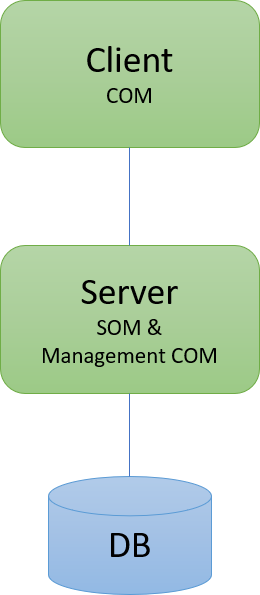Overview
This documentation page is heavily under construction. Various information may be missing. Please report any feedback here.
Cognibase equips developers with tools on both the server and client sides, streamlining the development of N-Tier applications. At the server end, the core component is the Server Object Manager (SOM). On the client side, it's the Client Object Manager (COM). However, these components can be combined in diverse configurations within the same process to create nodes tailored for specific tasks. For instance, our standard Object Server integrates a SOM with a managerial COM. Combining multiple COMs and/or SOMs can also facilitate system synchronization and aid in developing proxy and load-balancing solutions.

Cognibase offers a layer of abstraction over its data storage, positioning it as a versatile NoSQL object database. The Server Object Manager (SOM) functions as an in-memory transaction engine, persisting data to the underlying store. This means that the data store serves merely as a data repository without any stringent database dependency. In fact, a system could operate without any data store at all, relying solely on in-memory caching or data interchange, while still benefiting from Cognibase's consistent object graph transactions.
In architectures with multiple services, specialized clients can undertake various tasks, from data synchronization with external systems to automations and business rule implementations. For instance, an IoT system setup could be visualized through the ensuing diagram.
